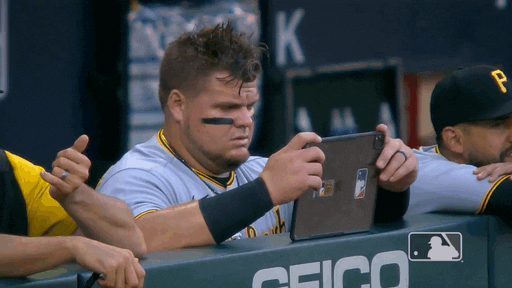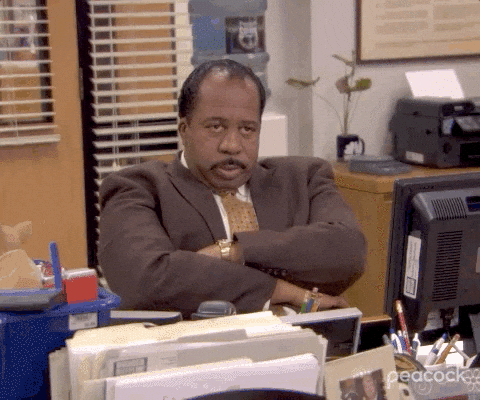How to Have a Better Relationship with Social Media
This is the second post of a miniseries about rethinking my relationship with social media. These are some of the tools and habits I've been using to reset that relationship, and they've started to make my time online feel lighter and more intentional.

If you've been enjoying The Copper Den, please consider subscribing so that the next post gets delivered straight to your inbox!
Last week, I shared some of the findings I came across when I was digging into social media.
Social media is in a constant relationship with each of us. It’s easy for that relationship to grow toxic and one-sided. Social media might just have too much power over us.
If you missed that post and want to check it out, you can find it here.
This week, I’m going to talk about some of the things I’ve done to reevaluate my relationship with social media. These will be more practical tools that I’ve used to help reframe and adjust how I use social media.
JOMO – the Screen Time Blocker
The first tool I’m going to mention is arguably the most powerful. It’s an app called JOMO.
In writing this article, I learned that JOMO is an acronym that means the “joy of missing out.” How fitting.
The app acts like the Screen Time settings on your iPhone on steroids. There are other apps that do this (Opalis a popular one), but JOMO does everything I need and is fairly cheap.
You can create screen time rules for any app on your phone. Unlike the native Screen Time settings, JOMO makes it much harder to circumvent.
I mostly use two rules.
The first rule blocks Instagram and Reddit on my phone during the week. I don’t block those apps on the weekend, but more on that in a later section.

The second rule is called “Mindful Morning,” and it blocks a few other apps (like LinkedIn and YouTube) until 9 am.
I enjoy playing the LinkedIn games in the morning, so I want to be able to use that app on my phone later. I just want to get my morning routine out of the way first.
This is the most heavy-handed tool I use.
Avoid the Apps; Opt for the Web Browser
Social media apps are the purist, most addictive form of social media.
I’ll continue to pick on Instagram since that’s a problem app of mine. The Instagram app is colorful. There’re videos and images. The Reels feed is never-ending.
The Instagram app is perfectly designed to keep you scrolling.
However, most social media platforms still have a website. Instagram is one of them. Instead of going to the app, you can just type in www.instagram.com.
The web-based versions of these apps are wildly less addictive because they’re just clunkier.

If you want to scroll Instagram this way, every time you go into and out of a comment, you have to start back at the top of the page. No auto-refreshing of the feed. No slot machine-like dopamine hit.
You still get to use social media, but the web-based versions are just clunky enough that they make it easier to stay in control of your brain.
I’ve deleted all the worst offenders from my phone.
I do have JOMO blocking the websites during the week, but on the weekends, I can go to www.instagram.comas much as I want.
I find myself spending way less time on social media when I use the web-based version.
Use Social Media on a Second Screen
A favorite lesson from Atomic Habits is that habits are tied to places and events.
For example, if you reward yourself with a sweet treat every time you open the pantry, your brain is going to start craving the treat before you even get to the pantry.
Social media also has habits associated with it. When your phone is in sight, your brain might automatically feel that urge to pick it up and start scrolling.
As mentioned, I use JOMO and have deleted the apps off my phone to break this habit. The habit is specifically geared toward my phone. I’ve been experimenting with letting myself use the apps on my iPad or computer.
I haven’t developed the same scrolling habit with my iPad. I (at least for now) feel in control when I scroll there.

I still want to be able to use social media to a degree. It’s worth it to me to check for news or movie announcements or stuff like that occasionally (with extra emphasis on the word).
So far, I’ve been able to have a healthier relationship with these apps when using my iPad. Maybe it’s because an iPad is awkwardly large and uncomfortable to hold for long times.
This is a watch point for me, though.
If I do notice my screen time creeping up on my iPad, it might be time to download JOMO on that device too. Tread cautiously with this one.
Do Everything One at a Time
The next two tips aren’t geared so much at getting off social media but rather what to do to help restore some focus and reset those dopamine levels.
Contrary to the messages that have been instilled with us from our schooling days, multitasking is bad for you.
Switching between multiple tasks at once turns out to be very taxing on the brain and only makes us worse at whatever we’re doing. Multitasking makes us more error prone too.
“Individuals rated as high media multitaskers (number of hours using multiple devices simultaneously, such as watching TV while also using a smart phone or tablet) showed poorer attention on cognitive tasks,” according to Brown University Health.
To combat this, I’ve been trying to focus on one thing at a time.
Recently, I enjoyed watching the US Open. When those matches were on, I put my phone down and just watched.
This may sound like a simple task, but it was very common for me to pick up my phone to scroll while watching TV. Now, I’ll mute the TV or pause it if I need to check my phone, then resume the task.
Focusing on just one thing at a time makes my brain feel better. It doesn’t have to constantly switch back and forth while trying to pay attention to a dozen things at once.
Boring Breaks
The second tip to restore focus is to take boring breaks. This isn’t so much as doing something but rather not doing anything.

Unfortunately, social media gives our brain a much bigger hit of dopamine than any creative outlets we might want to explore. It’s no wonder reading seems like an ancient art. A book simply can’t compare to the psychological overload that your phone can give you in just a few short minutes.
If you want to enjoy your creative outlets again, try taking boring breaks.
If the break your taking isn’t as stimulating as the activity you want to do, your brain is going to crave that activity more.
Say you’re reading a book and need a break. Just lay on the couch and look out the window for a couple minutes. Let your brain wander.
We’ve been conditioned to think boredom is bad, but it gives you a chance to let thoughts come to you. It lets your brain catch up.
Then, when you’re ready to start reading again, your brain might just feel more excited to get back to that book.
Getting My Screentime Down
I’m a firm believer in finding what works for you. These are just some of the things that have helped me feel better and get my screen time down.
I’m not perfect. There are still some days where I feel particularly lured to scroll on social media, but those days are fewer and farther between.
Now that I don’t spend each evening doomscrolling, I’m more at peace with letting myself have the odd night scrolling for a little.
These ideas helped me get my screentime down to around 1 hour and 30 minutes since the end of August. I still think I can get it down farther, but that time includes using my phone productively too (tracking workouts, reading on the Kindle app, etc.).
If you give one of these tools a try, let me know how it goes! I’d love to hear about your experience.
Next week, I’m going to wrap up this miniseries with some insights on how I’ve been feeling since I’ve cut that screentime down a bit. See you then!
Do you have any tools to get yourself off social media?
